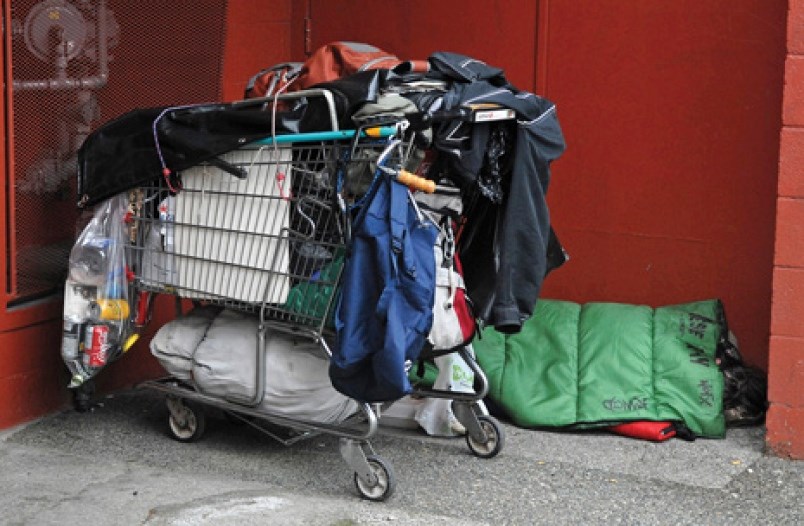A disturbing number of homeless youth identified in the Tri-Cities has prompted a call for more crisis services and supports for young people who age out of foster care.
The Metro Vancouver Homeless Count conducted in March revealed 28 homeless youth out of a total of 117 people without homes who were counted in the Tri-Cities during a 24-hour period.
Their ages aren’t mentioned but anyone under under the age of 25 is considered a youth in the report. And figures show that while a small number are with their parents, either at the Joy’s Place shelter run by Tri-City Transitions or couch-surfing with them, more than a dozen were on their own — couch-surfing with friends or relatives, camping in the bush or using emergency weather response beds at the permanent shelter in Coquitlam.
“The reality of the day is there is not a whole lot we can do anymore for youth. the emergency shelter beds that Iron Horse ran in Maple Ridge was shut down and there is nothing,” — Jerome Bouvier, Access Youth Outreach Services
It’s not until the age of 19, that youth are allowed to stay at the 3030 Gordon Ave. shelter and Jerome Bouvier of Access Youth Outreach Services said the March count shows that there need to be more services for young people, especially those in crisis.
“The reality of the day is there is not a whole lot we can do anymore for youth. the emergency shelter beds that Iron Horse ran in Maple Ridge was shut down and there is nothing,” Bouvier told The Tri-City News.
His agency, which runs a bus that provides counselling and support for at-risk youth, will try to connect young homeless people to Ministry of Children and Family Development, reconcile them with their families or simply give them food vouchers, a backpack, a sleeping bag or other necessities.
DIFFICULT TO DEFINE
Defining youth homelessness is also difficult because some young people have a family and a home to live in but either choose not to live at home or are escaping an abusive situation.
“It’s difficult to define it. Sometimes the children just don’t want to be home, they don’t like the rules," said Sandy Burpee, the chair of the Tri-Cities Homelessness Task Group, who this year’s count involved youth workers with School District 43. "We rely on the youth workers to determine if the person is in stress or not.”
Rob Zambrano, an assistant superintendent with SD43, said that when youth workers, counsellors or other school staff learn about student needs, they work with government or community agencies to provide support. As well, all schools can provide food for breakfast and lunch for those who need it.
But as youth get older, supports available to them are more challenging to access and some don’t want to be in the “system,” said Burpee.
Foster youth who age out of care are particularly at risk of homelessness because they lose many of the supports they had as children.
AGING OUT OF CARE
“These are youth who have been essentially stewarded but, when they turn 19 and supports fall away from them, that’s where I think there is a significant need for housing, support services and mentoring and everything to help them with independence," Burpee said.
He said he's also concerned about families needing supports and those who find themselves couch-surfing, often staying in neighbourhoods they are familiar with so their children can go to school.
He’s anxious to see approvals for a project for low-income single mothers and women struggling with homelessness and poverty on Metro Vancouver-owned land in Port Coquitlam. “It’s a very important facility for the Tri-Cities,” Burpee said.
As for Bouvier, he said he believes the survey didn’t capture the full numbers of youth facing homelessness because it was done too early in the day and mid-week, when youth were out doing other things, including possibly going to school or working.
He would like to see the count done on a Friday or Saturday night so volunteers would be able to contact more youth and get more accurate numbers.
• To find out more about at-risk youth and how to help, visit www.accessyouth.org or Access Youth Outreach Services on Facebook.



